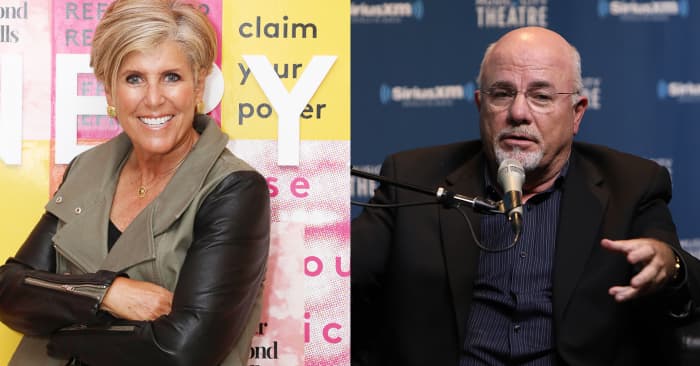
Experts like Suze Orman and Dave Ramsey stress the importance of an emergency fund — and it can help prevent you from going into credit card debt.
Getty Images
Americans’ credit-card debt rose to $887 billion in the second quarter of 2022, according to the Federal Reserve Bank of New York. And the No. 1 reason they cite for this debt? Emergency or unexpected expenses, with 46% of debtors citing an emergency or unexpected expense — including a medical bill, home repair, car repair, or some other emergency/unexpected expense — as the reason they carried a balance month to month, according to a new CreditCards.com report.
The solution to this is a tried-and-true rule espoused by nearly all the personal finance bigwigs: build up an emergency fund. And there’s good news on that front — savings accounts like these are now paying far more than they did last year.
While experts differ on exactly how much to save, the general rule is 3 to 12 months of expenses. For her part, Suze Orman is in the 12-months camp, saying, “You know my hope is that you work your way toward having enough set aside to cover 12 months of essential living costs. And you also know that I realize that can take time.” Dave Ramsey’s general rule of thumb is that people need 3 to 6 months’ worth of emergency savings. “The more stable your income and household are, the less you need in your emergency fund,” says Ramsey. The goal is to soften the blow or cover an unforeseen expense entirely. (See the best savings accounts rates you may get here.)
| Reasons for credit card debt | % of people |
| Covering emergencies and unexpected expenses | 46% |
| Day-to-day expenses like groceries, childcare and utilities | 24% |
| Retail purchases like clothing and electronics | 11% |
| Vacation and entertainment expenses | 11% |
Melissa Lambarena, credit-cards expert at NerdWallet, recommends preparing for the unexpected by working up to an emergency fund of at least $500 to start. “Even if it’s by saving $5 per week. After finding your financial footing, select a shovel-like balance transfer credit card or a debt management plan at a nonprofit credit counseling agency to dig your way out,” says Lambarena.
How to get out of credit card debt
- Sign up for a 0% interest balance transfer card
Rossman recommends signing up for a 0% balance transfer card. “These promotions last as long as 21 months. This is my favorite debt payoff tactic because the average credit card charges 16.73% and a 0% balance transfer card could save you hundreds or thousands of dollars in interest,” says Ted Rossman, senior industry analyst at CreditCards.com. (You can find some of the best 0% transfer cards here.) When used successfully, a balance transfer credit card can dramatically reduce the amount you pay over the life of the balance and shorten the time it takes to get out of debt. “You’ll need to have decent credit to get one, but if you do, you’ll find they’re widely available,” says Matt Schulz, chief credit analyst at LendingTree. That said, it’s important to be disciplined about paying it off during the 0% period, and not using the card to make any new purchases because the interest rate will skyrocket once the promo ends.
- Do the snowball method
One way to tackle credit card debt is to adhere to the snowball method, something Rossman suggests if you’re overwhelmed by the entirety of your debt. “Paying off the account with the lowest balance, akin to gaining momentum like a snowball rolling downhill, has psychological benefits,” says Rossman. (Of course, always pay the minimums on all debts.) By knocking out the smallest debt first, you feel like you’re making progress and building motivation to continue the task. While it may not make the most sense mathematically, it can help kickstart the process of paying off debt. - Credit card consolidation “You do it by taking out a new loan, such as a personal loan or a balance transfer credit card, and then you use that one loan to pay off several other loans,” says Schulz. Doing this can save you a substantial amount in interest and can also simplify your finances because you’ll only have to manage payments on one loan. (See some of the best personal loans you may get here.)
How to get your spending under control
To nip your spending in the bud, Nick Ewen, director of content at the Points Guy, recommends analyzing the total income you expect to earn each month. “Then map out all of the essential items that must be paid each month — housing, groceries and utilities. Finally, take a very critical eye to your discretionary spending. Cut out anything that’s truly not necessary like daily Starbucks and eating lunch out with co-workers multiple times per week,” says Ewen.
The advice, recommendations or rankings expressed in this article are those of MarketWatch Picks, and have not been reviewed or endorsed by our commercial partners.
Source: https://www.marketwatch.com/picks/the-no-1-thing-americans-now-blame-their-credit-card-debt-on-is-01665585709?siteid=yhoof2&yptr=yahoo
